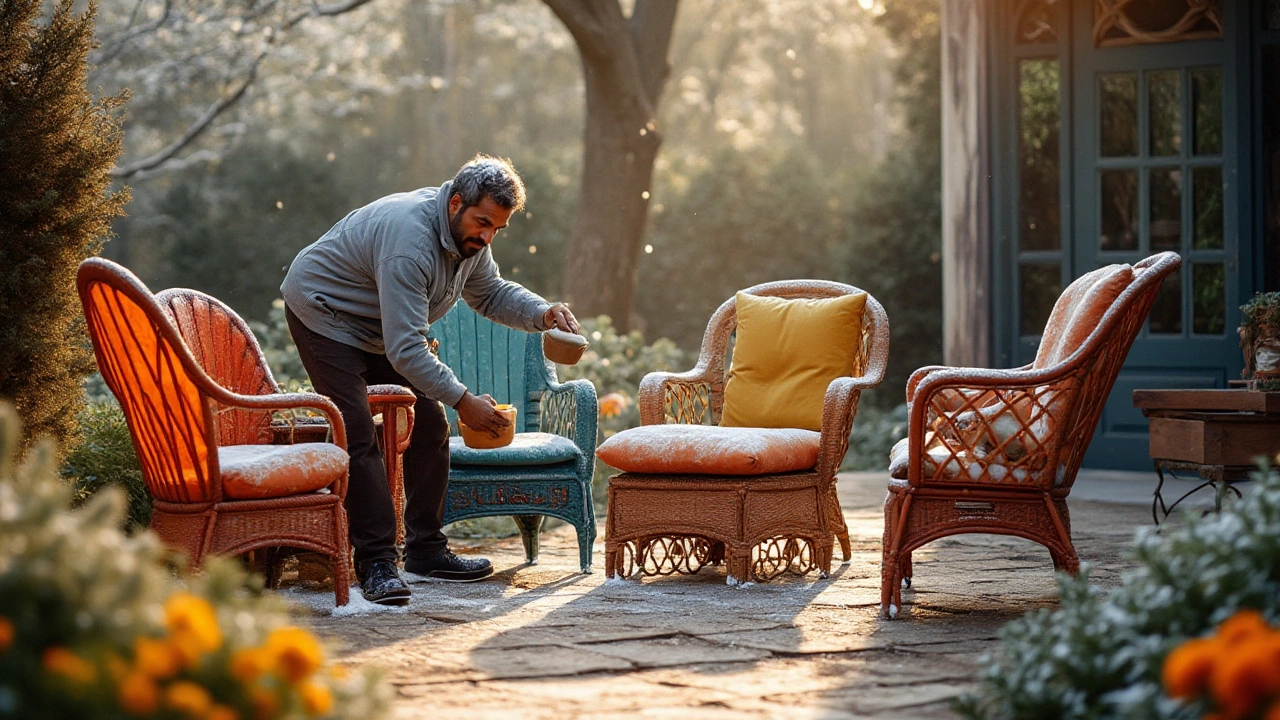Weather Protection: Keep Your Furniture Looking Fresh Year‑Round
If you’re tired of seeing couch cushions fade or garden chairs rust, you’re not alone. Weather can be harsh, but protecting your pieces doesn’t have to be a hassle. Below are practical steps you can start today, whether the item lives inside or out.
Cover It Up, Right Away
The fastest defense is a good cover. Pick a material that breathes – canvas or polyester works better than plastic because it prevents mildew. Snap the cover over your couch, recliner or patio set and tuck the edges so wind can’t lift it. If you store the cover while you’re not using the furniture, roll it loosely instead of folding it tightly to avoid creases.
For indoor sofas, a simple slipcover does double duty: it hides stains and blocks sunlight that can bleach fabrics. Choose a neutral color that matches your décor, so you won’t feel the need to change it often. Slipcovers are cheap, washable and can be swapped out seasonally.
Smart Placement and Storage
Where you put your furniture matters as much as what you put on it. Keep indoor pieces away from direct sunlight by moving them a few feet from windows or using sheer curtains. Outdoor tables and chairs should sit under a pergola, awning or a sturdy umbrella when the forecast calls for rain.
If you have a storage unit, measure the space before you move a couch in. A 10x10 unit can fit a compact sofa, but you’ll need to protect the legs with foam padding to avoid scratches. Store larger pieces on their sides, not lying flat, to reduce pressure on cushions.
When winter hits, consider bringing lightweight outdoor furniture inside. Even a short exposure to freezing temperatures can crack plastic frames. If moving pieces inside isn’t possible, cover them with a weather‑proof tarp and secure the edges with bungee cords.
Regular maintenance rounds out the protection plan. Wipe down outdoor metal frames with a mild detergent, then apply a rust‑inhibiting spray. For wooden chairs, use a quick‑dry oil every few months to keep the grain from drying out. Inside, vacuum your sofa regularly and spot‑clean spills with a gentle fabric cleaner.
Lastly, keep an eye on humidity. In damp basements or closets, a small dehumidifier can stop mold from forming on cushions. A dry environment also keeps wood and leather from swelling.
By covering, positioning and caring for your furniture, you’ll see less wear, fewer stains and a longer lifespan. It’s a small daily effort that pays off in comfort and looks for years to come.
Winter Care for Garden Furniture: Tips and Tricks
Winter can pose challenges for garden furniture, but with proper care, your pieces can withstand the harsh weather. This article offers insights into how different materials react to cold and moisture, and provides practical steps to protect furniture such as storage solutions, cleaning methods, and protective treatments. Learn how to maintain your outdoor space so it remains inviting and functional, even during winter.





